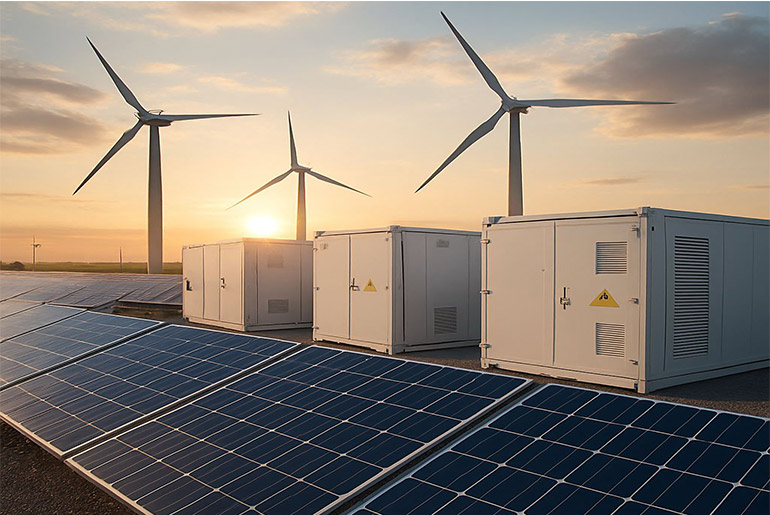In a major push to strengthen the nation’s renewable energy infrastructure, the Ministry of Power has announced the second tranche of its Viability Gap Funding (VGF) scheme aimed at catalyzing the development of 30 GWh of Battery Energy Storage Systems (BESS) across India. The initiative, approved by the Minister of Power, involves a substantial financial outlay of ₹5,400 crore, sourced from the Power System Development Fund (PSDF).
This funding will provide ₹18 lakh to ₹21.8 lakh per MWh (approximately $21,043/MWh) as VGF support to bridge the financial viability gap in battery storage deployment. This tranche follows the first VGF program launched in September 2023, which saw a budgetary backing of ₹94 billion (~$1.09 billion) for an initial set of projects.
Key Highlights of the Scheme:
- Total VGF Allocation: ₹5,400 crore (approx. $631.30 million)
- Target Capacity: 30 GWh of BESS- 25 GWh for 15 states, 5 GWh allocated to NTPC
- VGF Rate: ₹18 lakh to ₹21.8 lakh per MWh
- BESS Discharge Preference: Two-hour duration with an average of 1.5 charge-discharge cycles/day
- Implementation Timeline:
- Projects must be commissioned within 18 months from BESPA/PPA signing
- BESPA/PPA must be signed within 9 months of guideline issuance
- All BESS contracts must be awarded by June 2025
- VGF scheme to be completed by May 2027
The BESS projects are aimed at enabling large-scale grid integration of India’s growing renewable energy (RE) capacity—targeted at 393 GW by 2030 (293 GW solar and 100 GW wind). BESS will help mitigate the intermittency of RE sources and ensure optimal use of existing thermal and transmission infrastructure, especially during evening peak demand.
Eligibility and Application Process:
Eligible participants include state utilities and government-authorized agencies. These entities must:
- Submit detailed project proposals to the Central Electricity Authority (CEA) within 60 days
- Send proposals to the National Load Dispatch Centre (NLDC) within 30 days of letter issuance
Proposals must specify the implementing agency, BESS location, and capacity. NTPC’s projects may be developed under Section 62 of the Electricity Act, 2003, while all others will be awarded through Tariff-Based Competitive Bidding (TBCB) under Section 63.
Project Structure and Disbursement:
Projects will follow Build-Own-Operate (BOO) or Build-Own-Operate-Transfer (BOOT) models for a contract period of 12–15 years. Tariffs can be quoted in ₹/MW/month or ₹/kWh formats, depending on the structure.
The VGF will be disbursed in three tranches:
- 20% upon financial closure, against a bank guarantee
- 50% on reaching Commercial Operation Date (COD)
- 30% after one year of successful operation from COD
The developer must maintain a minimum 51% shareholding in the project until COD. Projects may be connected to intra-state or inter-state transmission systems (InSTS or ISTS). The onus of acquiring land and securing grid connectivity lies with the implementing entities.
National Energy Storage Targets:
According to CEA, India needs:
- 37 GWh of BESS by 2027
- 236 GWh by 2031-32
So far, 13.2 GWh has already been approved under the first VGF phase. This second tranche is expected to significantly accelerate BESS capacity addition and ensure grid stability in the face of surging renewable energy inputs.
This landmark initiative marks a decisive move toward achieving India’s net-zero goals and energy transition ambitions. By incentivizing BESS deployment through structured financial support and policy clarity, the Ministry of Power is laying the foundation for a flexible, reliable, and cleaner electricity grid.



